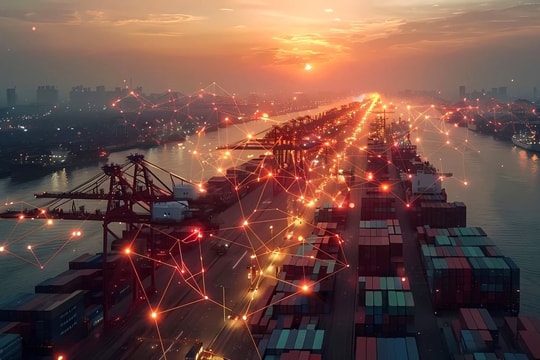
Cybersecurity Risks in Supply Chains
As global supply chains become more reliant on digital technology and third-party vendors, they have turned into prime targets for cyberattacks. This dependence exposes businesses to significant challenges in safeguarding data and ensuring the integrity of their systems. Cyberattacks can occur at various levels, from auxiliary suppliers to major partners within the supply chain.
Cyberattacks on supply chains not only lead to financial losses but also interrupt production, causing substantial damage to a company's reputation and eroding customer trust. According to the latest report from cybersecurity firm CrowdStrike, the average cost of a cyberattack within a supply chain can reach millions of dollars, including the cost of system recovery and damage control.
Three Common Types of Cyberattacks in Supply Chains
1. The “Fake” Supply Chain Attack
One of the most common tactics used by cybercriminals is social engineering. In these attacks, hackers often impersonate partners, suppliers, or even government officials to deceive victims into revealing sensitive information or transferring money.
This method remains highly effective because businesses frequently rely on email and digital communication for coordination. Particularly during the COVID-19 pandemic, such attacks surged as hackers exploited the shortage of medical supplies. For instance, many hackers impersonated well-known logistics companies like FedEx and UPS, sending fake notifications about delivery issues to trick victims into clicking malicious links.
To protect themselves, companies should implement multi-step verification processes before making critical decisions and adopt a "zero-trust" policy throughout their operations.
2. Attacks on Supplier-Managed Resources
A growing trend in cyberattacks is targeting resources managed by third-party vendors. These vendors often handle sensitive data or manage IT infrastructure for large companies, making them attractive targets for cybercriminals.
A prime example is the case of Marriott International, where sensitive customer data was exposed through a third-party vendor. This incident highlights that security measures should extend beyond the company itself to encompass the entire supply chain.
In addition to data, third-party IT infrastructure, particularly cloud-based systems, can also be vulnerable if not properly secured. Several major attacks have occurred due to misconfigurations in cloud systems, allowing hackers to easily infiltrate and steal data.
3. Attacks Through Supplier Access to Customer Systems
The most sophisticated and dangerous type of cyberattack occurs when hackers leverage a supplier’s access to a company’s systems to launch attacks from within. This often happens when the supplier's software or hardware is compromised, allowing attackers to bypass conventional security measures.
One well-known example is the SolarWinds attack, where hackers infiltrated the company's management software and spread malware to numerous customers, including U.S. government agencies. This case underscores the severe implications when a supplier’s vulnerability affects the entire supply chain.

Not only software but also hardware is a target for such attacks. The 2013 Target data breach is a notable case, where hackers accessed the company’s POS (point-of-sale) systems via an HVAC services provider. This demonstrates the need for companies to closely monitor all supplier access to their systems.
In the context of increasingly digitized and third-party-dependent supply chains, cybersecurity has become a critical issue for businesses. The three types of cyberattacks discussed above have the potential to cause severe damage, not only financially but also in terms of trust and reputation.
Companies must take a more proactive approach in protecting their systems by adopting stringent security measures, both internally and across the entire supply chain. Cybersecurity assessments should become an integral part of supplier evaluations, akin to sustainability and product quality standards.
Ultimately, businesses need to view cybersecurity as a continuous process, requiring regular updates and improvements rather than a temporary fix. In a world where threats are constantly evolving, maintaining the security of supply chains is the key to ensuring sustainable and stable growth. An effective security strategy not only shields the company from cyberattacks but also creates a competitive advantage in the global market, as customers increasingly prioritize safety and security in their transactions.
In the future, businesses must not only strive to protect their data and systems but also ensure that their entire network of partners and suppliers adheres to the highest cybersecurity standards. To achieve this, close collaboration and enhanced cybersecurity education within the supply chain community are essential. This not only helps mitigate risks but also ensures that the entire supply chain can operate safely and efficiently, even in the face of increasingly sophisticated cyber threats.
Therefore, safeguarding the supply chain from cyberattacks is not solely the responsibility of technical departments. It requires the active participation of the entire organization, from senior leadership to even the smallest suppliers.








.jpg)

.png)
.png)
.png)


.png)
.png)






.png)

